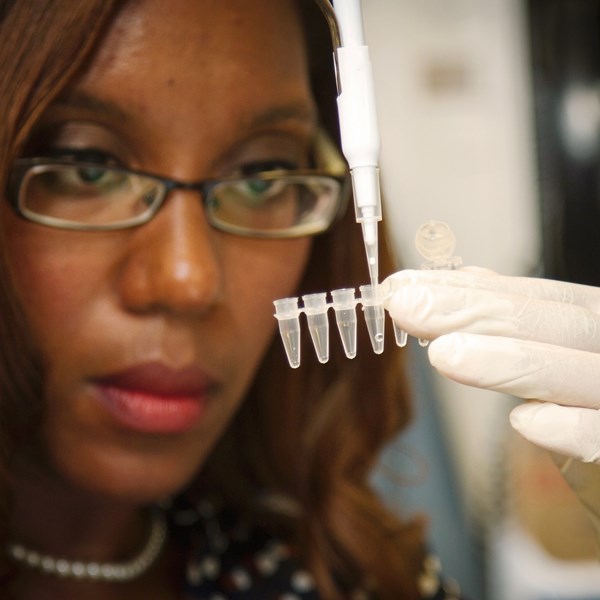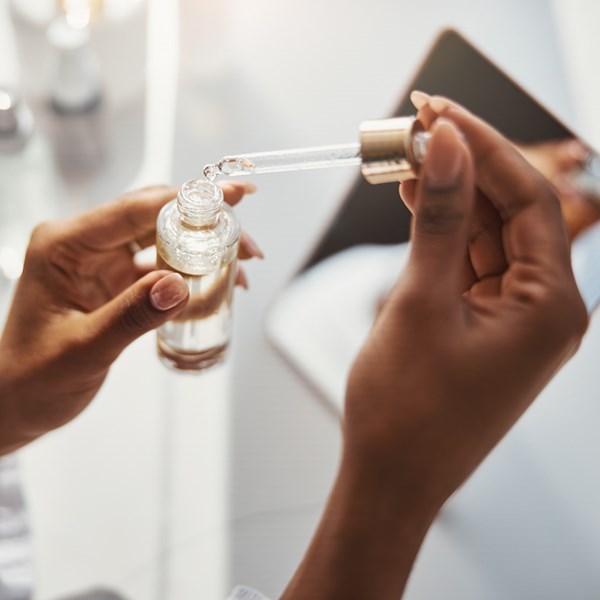Earlier this week, the Supreme Court handed down its judgment in Warner-Lambert Company LLC v Generics (UK) Ltd t/a Mylan and Actavis, holding Warner-Lambert’s patent to be invalid, and that had key patent claims been valid, they would not have been infringed by Actavis.
The decision approves “plausibility” as a non-statutory test for sufficiency of disclosure, and defines its role in establishing validity of a patent claiming a new medical use of a known pharmaceutical compound. The court’s opinion on the correct test for infringement of Swiss-type second medical use claims reveals a divergence of views, with a majority emphasising the importance of the outward presentation of the marketed product.
BACKGROUND
Actavis had sought to supply the market for indications for pregabalin for which patent protection had expired, namely epilepsy and generalised anxiety disorder. In recognition of the fact that generic pregabalin might be dispensed against prescriptions for patients suffering from neuropathic pain, Warner-Lambert asserted its second medical use patent covering that indication against Actavis. Meanwhile, a revocation action initiated by Generics UK Ltd (trading as Mylan) sought revocation of the patent. The present appeal relates to both infringement and revocation actions.
THE PLAUSIBILITY TEST FOR SUFFICIENCY OF DISCLOSURE
Sufficiency of disclosure is essentially a requirement that the patent discloses the invention in a manner sufficiently clear and complete for it to be performed by a skilled practitioner. The court held that the disclosure in the patent is insufficient in relation to the key patent claim asserted against Actavis, in which the medical condition is identified as neuropathic pain.
Lord Sumption, with whom Lord Rees and Lord Briggs agree, gave the leading judgment. He considered that if the statutory test for sufficiency of disclosure were an exhaustive statement for the requirement of sufficiency in relation to a second medical use patent, disclosure of the new purpose would be enough to enable the invention to be performed by administering the known compound to a patient suffering from the relevant condition. The concept of a “plausibility test” originally arose at the European Patent Office (EPO) in order to avoid speculative claiming, and had been applied by the trial court judge and the Court of Appeal as requiring disclosure in the patent of more than mere assertion that a known compound was efficacious for treating a specified condition. Lord Sumption, agreeing with the principle, found that: "It must always be necessary for the patentee to demonstrate that he has included in the specification something that makes the claim to therapeutic efficacy plausible. Otherwise a mere assertion of efficacy would be enough."
Reviewing UK and EPO case law, he identified a “fundamental principle” that the patentee must not only make but in fact disclose a contribution to the art, that contribution consisting in the discovery that the medicament can be expected to work. Subsequent data may supplement this, but only if the therapeutic effect is plausible in the light of the disclosure in the patent. As for how high to set the bar for plausibility, the disclosure of a mere possibility of efficacy would not be enough, but the disclosure of reasonable scientific grounds for expecting that a medication might well work may render a claimed therapeutic effect plausible. Moreover, where the identified condition embraces a number of different pathologies, and the claim is construed as asserting the efficacy of the product for each of them, the assertion must be plausible in relation to them all.
Applying these principles to the facts of the case, Lord Sumption agreed with the trial judge and the Court of Appeal in finding that the experiments disclosed in the patent, which relate to animal models of inflammatory pain, did not render plausible the treatment of central neuropathic pain. Disagreeing with the lower courts, Lord Sumption found that the results in the patent were predictive only of efficacy for inflammatory pain, and not peripheral neuropathic pain. The trial judge’s analysis had been based entirely on the common general knowledge that central sensitisation was “involved” in both inflammatory and peripheral neuropathic pain, which would only support a conclusion that it was “possible” that a drug effective for inflammatory pain would also be effective for peripheral neuropathic pain. Although Lord Sumption agreed that the involvement of central sensitisation in both inflammatory and peripheral neuropathic pain does suggest that there may be a common metabolic mechanism at work, neither the specification nor the common general knowledge supplied any reason for supposing that pregabalin affects the operation of that mechanism. Furthermore, there is no mention of central sensitisation in the patent, or indeed of any unifying principle that might embrace any condition other than inflammatory pain.
Lord Sumption found no basis for plausibility in the possibility that the skilled team would be encouraged by the data in the patent to carry out simple tests (which are themselves identified in the patent) to confirm the suitability of pregabalin for treating peripheral neuropathic pain. He observed that the apparent discrepancy between the breadth of the claims and the absence of supporting data in the specification serves only to confirm the absence of any disclosed contribution to the art.
Lord Hodge, dissenting, agreed with the trial judge that the disclosure in the patent was arguably enough to satisfy the plausibility test in relation to peripheral neuropathic pain. He referred to the expert evidence which treated as credible the suggestion that the efficacy of pregabalin in reducing pain, as revealed in the patent, would not be confined to inflammatory pain and that the medication would also be effective in relation to peripheral neuropathic pain. He considered that it was not necessary, in order to overcome the relatively low hurdle of plausibility, for the patent to demonstrate by experiment or by scientific theory that pregabalin blocked or reduced central sensitisation. Lord Mance, agreeing with Lord Hodge, considered that Lord Sumption’s judgment puts the test for sufficiency of disclosure too high, noting that the Technical Boards of Appeal of the EPO have accepted as sufficient a tailored claim which appears scientifically possible, even though it cannot be said to be even prima facie established, without for example testing or assays according to the state of the art.
The decision highlights the importance of including in a patent application the technical rationale for why experimental data make an invention plausible in relation to all significant areas of a second medical use patent claim.
INFRINGEMENT OF SWISS-FORM SECOND MEDICAL USE CLAIMS
The court’s unanimous view is that if the patent had been valid, it would not have been infringed by Actavis. The reasons for arriving at this agreed result differ substantially.
It was common ground that a Swiss-form claim is a purpose-limited process claim, meaning that the claim protects the process of “preparation” (or manufacture) of a medicament containing the specified substance only insofar as that process is undertaken “for” treating the specified indication. The trial judge and Court of Appeal had considered that the intention of the manufacturer must be relevant to determining whether the manufacture was “for” the specified indication. The trial judge applied a test of “subjective intent”, namely that the manufacturer must make the product with the intention of targeting the patent-protected market. In contrast, the Court of Appeal applied a test of “objective intent”, holding that direct infringement would be found if the manufacturer knows, or it is reasonably foreseeable, that the drug will intentionally be used for the patented indication.
Lord Sumption, with whom Lord Rees agrees, rejected any reliance on intent as being relevant for direct infringement of Swiss-form claims. He noted that downstream parties including distributors and pharmacists would incur liability for dealing in infringing products, and that their only safe course of action would be to refuse to deal with the generic product at all. It would be arbitrary for the actions of downstream parties to be held to infringe on the basis of the intention of someone else, whether that intention was to be assessed subjectively or objectively. Although reasonable steps might be taken to reduce the extent to which a generic medicine may enter a patent-protected market, there are no such steps that would prevent it entirely. Therefore, even a test of “objective intent” would be impractical and frustrate legal certainty.
Instead, Lord Sumption put forth an “outward presentation” test, stating: "In my opinion, in a purpose-limited process claim, the badge of purpose is the physical characteristics of the product as it emerges from the relevant process, including its formulation and dosage, packaging and labelling and the patient information leaflet which in EU (and other) countries will identify the conditions for whose treatment the product is intended."
The patient information leaflet is directly addressed to the downstream parties who would deal in the product, providing them with legal certainty. Lord Sumption considered that this approach meets further policy objectives of providing reasonable protection to second medical use patents, and allowing the public the benefit of the product for the original patent-expired therapeutic use.
Lord Mance agreed that test should depend on the objective characteristics of the product judged by reference to the way in which it is packaged and marketed. On that basis, a process leading to a composition or product that does not make clear that its permitted use is limited will infringe. Nevertheless, he observed that: "it may be going too far in favour of generic manufacturers to suggest as an absolute rule that a generic product, prepared, presented and put on the market, must always be viewed in isolation by reference only to its own packaging and instructions, and without regard to the realities or of the market for which it is prepared and into which it is being released."
Lord Briggs, sympathising with the difficulties in a test based on intent outlined by Lord Sumption, nevertheless favoured the “subjective intent” test, considering that the “outward presentation” test would not strike a fair balance between the interests of generic manufacturers and patentees. He considered that the packaging, labelling and patient instruction leaflets will in most cases be the best evidence of the manufacturer’s intention. Lord Hodge agreed with Lord Briggs, principally because his approach would create a fairer balance between the parties, and noted that if liability of downstream dealers in generic medicines were to cause them to refuse to handle generic products, it would be for the legislature to address those problems.
The court unanimously rejected an argument that a Swiss-type claim could be subject to indirect infringement, which would require that means are provided by one party for putting the invention into effect (by another). Although the Court of Appeal had held that the dispensing of the drug against a prescription for the patented indication would put the invention into effect, the court held that the invention is limited to the manufacture of the drug for the designated use, and not the subsequent use of the product for treating patients.
Because Warner-Lambert’s patent is held to be invalid, the court’s views on infringement are not binding. However, the majority view is likely to be persuasive, and it may be that, in most cases, a generic product which does not identify in its packaging, labelling or patient instruction leaflet any potential uses which are subject to patent protection would not infringe a Swiss-type second medical use claim in the UK.
THE FUTURE
It is worth noting that second medical use inventions must now be claimed at the EPO in the form of purpose-limited product claims, not Swiss-form claims, and the test for infringement will necessarily differ. There is the possibility that purpose-limited product claims may provide for better enforceability; however, that is a matter that can only be addressed by future judgments or legislation.






